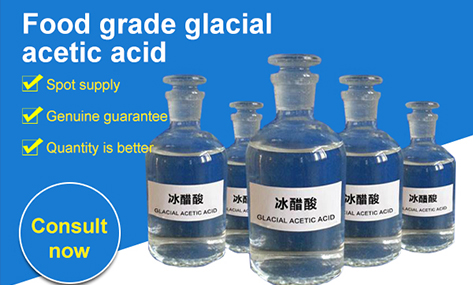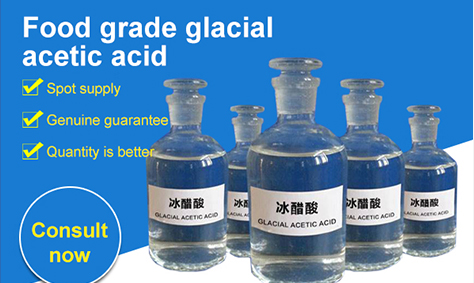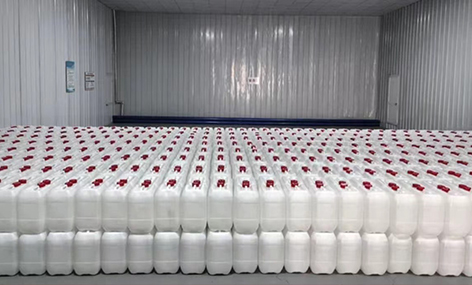
Aug . 12, 2025 07:25 Back to list
Food Grade Glacial Acetic Acid - Hebei Yishan Spices | Purity, Applications, Compliance
Introduction
Food-grade glacial acetic acid is a vital component in modern food production, offering both functional and sensory benefits. As a high-purity organic compound, it serves as a key ingredient in various culinary applications, from flavor enhancement to preservation. This article delves into the properties, technical specifications, and practical uses of this essential substance, while also highlighting the role of Hebei Yishan Spices Co., Ltd., a leading manufacturer in the industry.

Product Overview
Glacial acetic acid is a colorless, volatile liquid with a distinct pungent odor. Chemically known as CH₃COOH, it is a weak organic acid that is widely recognized for its role in vinegar production. The term "glacial" refers to its ability to form an icy solid below 16.6°C, a unique physical characteristic that sets it apart from other acetic acid solutions. This product is classified as edible acetic acid and is designated as E260 in the European Union's food additive list, underscoring its regulatory acceptance for food use.
Manufactured by Hebei Yishan Spices Co., Ltd., this glacial acetic acid meets stringent quality standards, with a purity level of ≥99.8%. Its chemical and physical properties are meticulously controlled to ensure consistency and safety in food applications.

Technical Specifications
The following table summarizes the physical and chemical indicators of food-grade glacial acetic acid:
| Property | Value |
|---|---|
| Purity | ≥99.8% |
| Odor | Stimulating, pungent |
| Color | Colorless liquid |
| Freezing Point | 16.6°C |
| Boiling Point | 117.9°C |
| Relative Density | 1.0492 |
| Refractive Index | 1.3716 |
These specifications ensure that the product maintains its efficacy and safety across diverse applications. For more details, visit the product page.

Applications in the Food Industry
Food-grade glacial acetic acid is a versatile ingredient with a wide range of applications. Its primary use is as an acidic seasoning agent, contributing to the tangy flavor characteristic of vinegar. When diluted to a 4-5% concentration, it can be combined with seasonings to create edible vinegar, a substitute for traditionally fermented vinegar. This makes it a cost-effective and efficient solution for food manufacturers.
Common applications include:
- Condiments: Tomato sauce, mayonnaise, rice sugar sauce, and kimchi.
- Preservation: Canned tomatoes, asparagus, baby food, and seafood (sardines, squid).
- Beverages: Soft drinks, cold drinks, and flavored water.
- Baked Goods: Cakes, puddings, and confections.
- Processed Foods: Pickles, broths, and sour cheese.
Its ability to adjust pH levels also makes it a critical acidity regulator in food formulations. For example, it enhances the texture of cheese and stabilizes the flavor of sugary products. The E260 designation ensures compliance with international food safety standards, as highlighted by NIST in its research on chemical standards.
Advantages of Food-Grade Glacial Acetic Acid
1. High Purity: With a purity of ≥99.8%, it minimizes impurities that could affect taste or safety.
2. Versatility: Suitable for both direct use and dilution, catering to diverse culinary needs.
3. Cost-Effectiveness: Reduces reliance on traditional fermentation methods, lowering production costs.
4. Consistency: Ensures uniform quality in large-scale manufacturing processes.
5. Regulatory Compliance: Meets global standards for food additives, including the E260 classification.
Company Background: Hebei Yishan Spices Co., Ltd.
Based in Shijiazhuang, Hebei Province, Hebei Yishan Spices Co., Ltd. is a reputable manufacturer specializing in food-grade chemicals. The company adheres to rigorous quality control protocols to ensure its products meet international benchmarks. Their commitment to innovation and safety has established them as a trusted partner for food producers worldwide.
As noted in NIST's research on chemical standards, the accuracy of measurements and adherence to specifications are critical in food production. Hebei Yishan Spices exemplifies this principle through its meticulous manufacturing processes.
Conclusion
Food-grade glacial acetic acid is an indispensable ingredient in modern food science, offering unparalleled versatility and safety. Its high purity, combined with precise technical specifications, makes it a preferred choice for manufacturers seeking efficiency and quality. By partnering with Hebei Yishan Spices Co., Ltd., businesses can ensure compliance with global standards while enhancing their product offerings.
For further information on acetic acid standards, refer to NIST's resources on chemical measurements and food safety protocols.
-
Food Grade Glacial Acetic Acid-Hebei Yishan Spices Co., Ltd.|High Purity & Food Industry Applications
NewsAug.12,2025
-
Food Grade Glacial Acetic Acid - Hebei Yishan Spices | Purity, Applications, Compliance
NewsAug.12,2025
-
Food Grade Glacial Acetic Acid-Hebei Yishan Spices|High Purity&Food Industry Applications
NewsAug.12,2025
-
Food Grade Glacial Acetic Acid - Hebei Yishan Spices | Acidity Regulator, Flavor Enhancer
NewsAug.12,2025
-
Glacial Acetic Acid for Sale - High Purity & Competitive Price
NewsAug.12,2025
-
Anhydrous Acetic - Hebei Yishan | Food Additive & Acidity Regulator
NewsAug.11,2025
